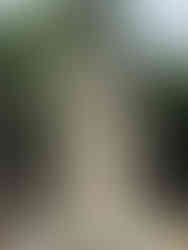Visit of an abandoned Jewish cemetery in Budapest -the House of Eternity
- lzb
- Jun 21, 2019
- 3 min read
Updated: Jul 3, 2019
It was my first time visit at this cemetery, so I was already impressed at the beginning about the amazing entrance gate. It was designed by Béla Lajta and completed in 1908. Do you have idea, why was it so important to change the old gateway to a new one? Because from the early 20th century only elite Jewish families of Pest were buried here and it was needed to have constructed another one by the Chevra Kadisha.

This cemetery is really unique in Europe. Prominent personalities are buried here, the buildings and tombs were designed by great artists like Béla Lajta, Géza Maróti, Alfréd Hajós, Ignác Alpár, Sándor Fellner, Zsigmond Quittner and Kálmán Gerster. There are about 150 cripts, 126 of them were built by one of the side walls. When they were built, there was no other tombstones next to them. I have to emphasize the name of Béla Lajta who designed the entrance gate, the ceremonial building and eleven memorials in the garden. He learned from Ödön Lechner, the master of Secessionist style.
You can find here simple tombstones and also artistic creations, black granite obelisks, sculptures and mausoleums. It is an architectal heritage and it is not a wonder that the cemetery would like to join the world heritage sites after renovation works.
There is the ceremonial building designed by Béla Lajta, behind the entrance gate which was completed in 1908. The dome above and the two ornate-clad gates, the white marmor decorations and gigantic copper menorahs are now missing, but we can imagine how beautiful it could be in the past. I got the information during my visit that the original building will be rebuilt in near future.


Interesting fact that the ceremonial and gateway building of this Salgótarjáni Street Cemetery has a reference to an important Jewish memorial from the Holy Land: their pattern was from the grave of the biblical Rachel, Jacob's wife and Joseph's mother, found near Behlehem.

The cemetery was opened in 1874 and closed after the 2. world war in 1945. Many of the victims who died in Ghettos were buried here. After closing the cemetery was practically abandoned. We can see the damages on the stones, sometimes it is so dangerous that you cannot go close to the tombstones. The overgrowth of the plants is rather mystic, gives a specific atmosphere as we were in the jungle somewhere. It has its unique beauty although we had to struggle with the mosquitos during our visit among the green trees.
Unbelievable that nobody knows exactly how many people are buried here. The management of the cemetery makes efforts to make a measuring tomb by tomb.

The Sváb's sons, Gyula and Sándor were wealthy landowners and had good connections with Hungarian elite. Interesting that the unique Hebrew letters were designed by Béla Lajta, especially for this piece. There are two birds on the memorial which are probably eagles. They hold their heads down and their wings together as they were sad.


Dr. Emil Guttmann was a wholesaler, co-owner of the Guttmann and Wahl Company in Lipótváros. His tombstones has a geometric basic form and there are lion heads on the two sides of the memorial.

Wahrmann was elected to be a vice president of the Jewish Congress of 1868, where he proved a fierce opponent of the Orthodox, and later, in 1883, became head of the Neolog Jewish Community of Pest. Mór Wahrmann was the first Jewish member of the Parliement. His daughter has built up the mausoleum for his father. Zsigmond Quittner was also involved in design work. You can see elements from ancient Greek and Renaissance architecture.
On 9th June 1882 he delivered a parliamentary speech in the debate concerning Jewish immigration in the wake of pogroms in Russia. His speech led to a sensational duel (hence the preparation of his will) with the leading antisemitic member of parliament of his time, Győző Istóczy. Nobody was injured, according to legend the duel helpers made something with the guns.

This tombstone is the copy of the entrance gate of the Anker House in Deák tér . I was happy to see this here because I knew that the gate is designed upon a tombstone and I wrote about the Anker house in antoher blog "The giant of Deák Square", but I didn't know that the tombstone is located in this cemetery. But anyway it is really interesting why the architect used exactly this tomb as a model.


































































Comments